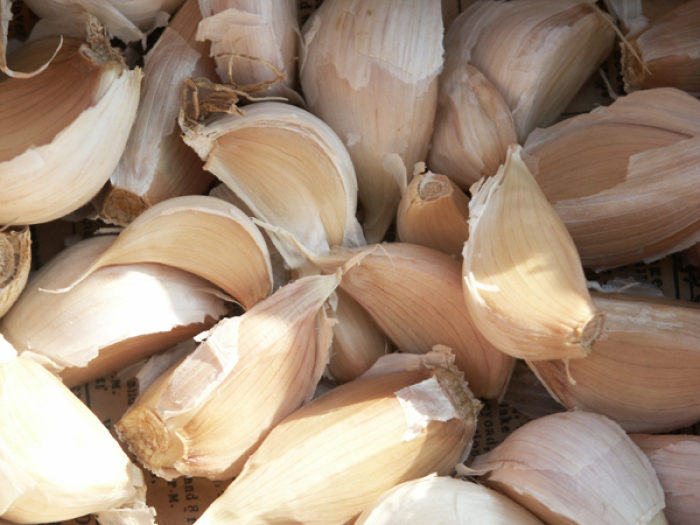Plant Garlic as a Fall Crop
Snuggled under straw mulch, garlic cloves are full of life that will burst forth in the early spring

Fall is the time to plant garlic in most parts of the United States. If you haven’t done it yet, there is still time, unless you are so far north that the ground is frozen.
Garlic
Allium sativum
Native to Central and Western Asia
Perennial, Zones 4–9
Needs full sun and loamy, well-drained soil
This week while I am at the Ozark Folk Center, head gardener, herbalist, and co-author Tina Marie Wilcox planted garlic in the kitchen garden here. Both she and I have been planting garlic for over 25 years and we do this anytime from the end of October through November—whenever we have the time—and when the moon is in a rooting phase. The process is documented in the photos that accompany this article and instructions for how I plant garlic follows.
About six to eight weeks before a good hard freeze is expected, I go out and turn the soil over. I usually plant four 50-foot rows, which seems like a lot for a family of four, but I always use it up before the next crop comes in. I peel some of the excess papery skin off of the bulbs, breaking them apart carefully into separate cloves. Then I plant each clove by hand, sticking it down in the earth with my finger so that it is covered with about 1-1/2 inches of soil. I plant them about 6 inches apart, with the root end down, then spread a not-too-thick layer of straw mulch over the bed to keep the weeds out and the soil from eroding.
| Place cloves a hands width apart. | |
| Place clove root-end down and pointed side up. | |
| Mulch the garlic bed with wheat straw. |
If the weather is warm, sometimes the little cloves sprout, but it doesn’t seem to deter new growth in the spring. During the winter I know that these dormant garlic cloves are snuggled under the straw mulch, full of life that will burst forth in the early spring.
Although my garlic bulbs may not be as large as commercially grown garlic, the flavor and pungency are superior. Bringing in the garlic harvest makes me feel wealthy in many ways. These bulbs are full of vitamins and nutrients, which keep my family and friends healthy throughout the year. And they give a wonderful flavor to the foods I prepare, so I save some of the bulbs to plant for part of next year’s crop.
Many varieties
There are over 300 varieties of garlic to grow. The majority of the papery outer coverings on garlic bulbs are white, although there are quite a few that have red or purple tinges, mottling, or stripes. However, you can’t judge a book by its cover. Although the outside may be white-skinned, once peeled, the coverings of the garlic cloves themselves have more variation in color ranging from red, pink, purple to brown, or yellow.

Get more info on garlic:
• Harvesting Garlic
• Garlic as an Herbal Medicine
• Making the Most of Garlic
• Garlic Scapes
Fine Gardening Recommended Products

A.M. Leonard Deluxe Soil Knife & Leather Sheath Combo
Fine Gardening receives a commission for items purchased through links on this site, including Amazon Associates and other affiliate advertising programs.

Corona E-Grip Trowel
Fine Gardening receives a commission for items purchased through links on this site, including Amazon Associates and other affiliate advertising programs.

Plant Covers Freeze Protection 10 ft x 30 ft Floating Row Cover 0.9oz/yd²
Fine Gardening receives a commission for items purchased through links on this site, including Amazon Associates and other affiliate advertising programs.







Comments
Log in or create an account to post a comment.
Sign up Log in